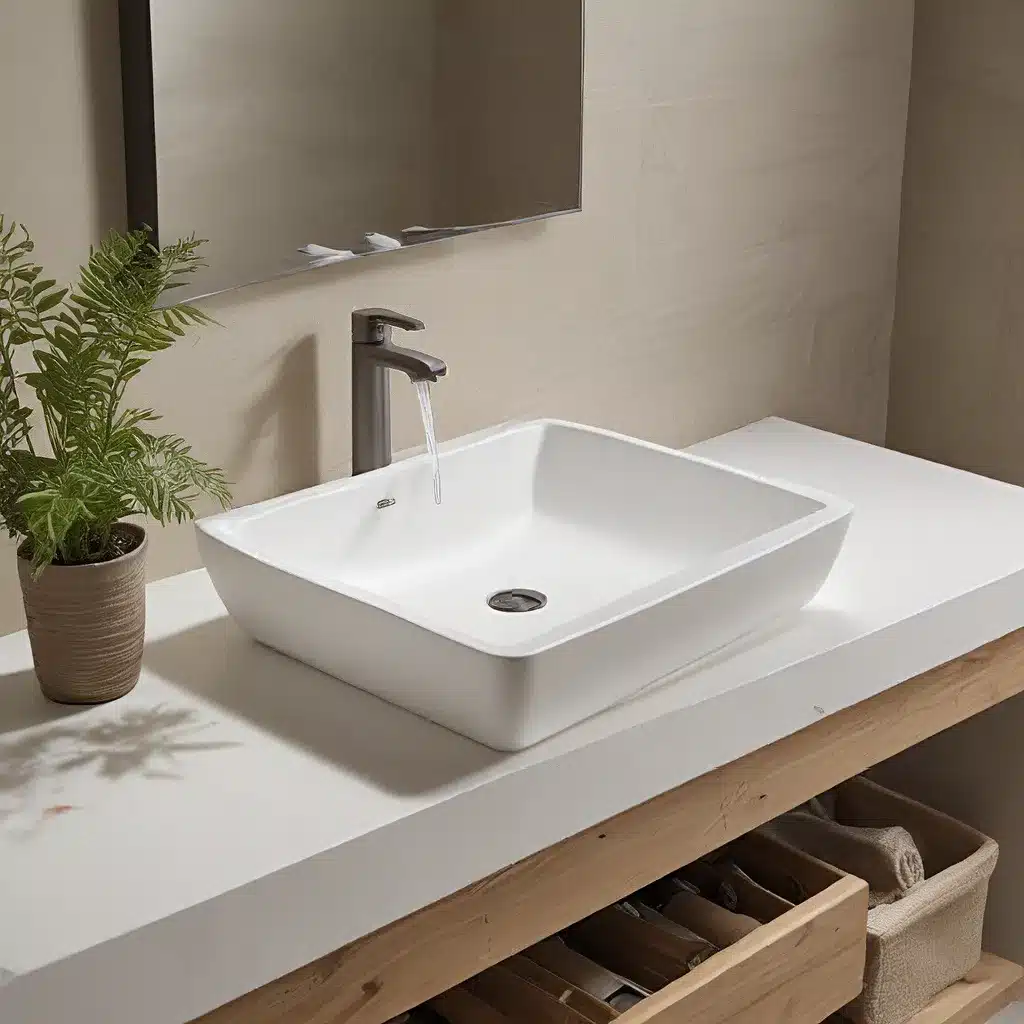
In the ever-evolving world of bathroom design, the spotlight has shifted towards a more sustainable and environmentally-conscious approach. One of the key areas where this transformation is taking place is in the realm of washbasins and sinks. As homeowners, interior designers, and contractors seek to reduce their environmental impact, the demand for eco-friendly materials and innovative designs has surged, leading to a revolution in bathroom fixtures.
Embracing Sustainable Materials
The pursuit of sustainability has driven manufacturers to explore a diverse range of materials beyond the traditional options, such as ceramic and porcelain. These new materials not only offer a visually striking aesthetic but also boast impressive eco-friendly credentials.
Natural Stone: The Timeless Choice
One of the most popular sustainable materials in bathroom design is natural stone. Materials like marble, granite, and soapstone have long been revered for their timeless beauty and durability. These natural resources are often sourced locally, reducing the carbon footprint associated with transportation. Moreover, natural stone is a highly durable and long-lasting material, minimizing the need for frequent replacements and contributing to a more sustainable bathroom.
Engineered Quartz: A Versatile Alternative
While natural stone remains a top choice, the rise of engineered quartz has also captured the attention of eco-conscious consumers. Quartz is a highly sustainable material, as it is composed of ground quartz crystal and a small percentage of binding resins. This blend of natural and man-made elements results in a durable, non-porous, and low-maintenance surface that is an excellent alternative to natural stone. Engineered quartz also offers a wider range of color and pattern options, allowing for greater design flexibility.
Recycled Glass: Giving New Life to an Old Material
Another innovative sustainable material gaining popularity in bathroom design is recycled glass. Manufacturers have found ways to repurpose discarded glass into stunning washbasins and sinks. These unique creations not only reduce waste but also showcase the beauty of upcycled materials. Recycled glass sinks often feature distinctive patterns and textures, adding a one-of-a-kind character to any bathroom.
Sustainable Solid Surface: A Versatile Choice
Solid surface materials, such as those offered by leading brands like Washbasin Factory, have also emerged as a sustainable option. These engineered materials are composed of a blend of natural minerals, pigments, and resins, resulting in a durable and non-porous surface. Solid surface sinks can be customized to fit a wide range of bathroom designs, making them a versatile choice for both residential and commercial projects.
Innovative Designs for Sustainable Bathrooms
As the demand for eco-friendly bathroom fixtures continues to grow, manufacturers have responded with a wealth of innovative designs that seamlessly blend sustainability and aesthetics.
Minimalist and Clean-Lined Washbasins
One of the trends that has gained traction in sustainable bathroom design is the minimalist and clean-lined washbasin. These simple, yet striking, designs often feature sleek profiles, gentle curves, and subtle textures that accentuate the natural beauty of the materials. The focus on minimalism not only enhances the visual appeal but also aligns with the principles of sustainability, as these designs often require less material to produce.
Organic and Natural Shapes
In contrast to the minimalist approach, some sustainable bathroom designs embrace organic and natural shapes. These washbasins and sinks draw inspiration from the natural world, featuring fluid lines, irregular forms, and textured surfaces that evoke a sense of natural elegance. This design aesthetic resonates with eco-conscious consumers who seek to integrate nature-inspired elements into their bathrooms.
Versatile and Multipurpose Solutions
As sustainability becomes a priority, the demand for versatile and multipurpose bathroom fixtures has also increased. Manufacturers have responded by creating washbasins and sinks that can seamlessly adapt to various spaces and needs. This might include modular designs that allow for customization, or washbasins that can double as storage units, reducing the overall footprint and material usage within the bathroom.
Integrated Water Conservation
One of the core principles of sustainable bathroom design is water conservation. Manufacturers have developed innovative washbasin designs that incorporate water-saving features, such as low-flow faucets, motion-activated sensors, and water-efficient drainage systems. These integrated solutions not only reduce water consumption but also contribute to a more environmentally-conscious bathroom experience.
Installation and Maintenance Considerations
When it comes to sustainable bathroom design, the installation and maintenance of washbasins and sinks are equally important considerations.
Simplified Installation
Eco-friendly bathroom fixtures often prioritize simplified installation to minimize the environmental impact associated with complex construction processes. This can include modular designs that require less on-site work, as well as pre-fabricated or pre-assembled options that reduce waste and labor hours.
Easy Maintenance and Longevity
Sustainable bathroom fixtures must also deliver long-term value and low-maintenance requirements. Many of the eco-friendly materials, such as solid surface and engineered quartz, are non-porous and resistant to stains and scratches, making them easy to clean and maintain. This ensures that these fixtures can withstand the test of time, reducing the need for frequent replacements and contributing to a more sustainable bathroom ecosystem.
Embracing the Future of Sustainable Bathrooms
As the demand for eco-friendly bathroom design continues to grow, manufacturers are rising to the challenge, delivering a wide range of innovative and sustainable washbasin options. From natural stone and engineered quartz to recycled glass and versatile solid surface materials, the choices available to homeowners, designers, and contractors are truly transforming the way we approach bathroom design.
By embracing these sustainable solutions, we can create bathrooms that not only look beautiful but also align with our environmental values, reducing our impact on the planet and paving the way for a more sustainable future. As we continue to explore the possibilities of eco-friendly bathroom design, the future of our washbasins and sinks promises to be both visually stunning and environmentally responsible.

